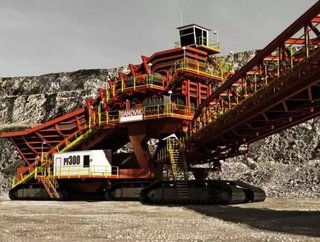Safety improvement goals drive innovation in technology and product development

Automation and technology help keep mines safe and productive
Safety is the top priority in the mining industry, and in the last 10 years, it has been a key driver in technological and new product development. This wave of innovation is delivering, specifically by decreasing the number of mining-related injuries. In fact, according to the National Mining Association, the total injury rate for 2012 fell to a record low of 2.56 injuries / 200,000 hours worked, compared to 2.73 in 2011 and 3.92 in 2005.
Leading this safety surge is the development of automated systems.
Safety First
A recent survey of mining executives commissioned by Mincom asked respondents to identify their current challenges by level of urgency, yielding these responses:
- Ensuring workplace safety (71 percent);
- Improving performance and operational effectiveness (67 percent);
- Managing capital projects (46 percent);
- Recruiting and retaining a skilled workforce (38 percent);
- Addressing environmental concerns (37 percent).
The results deliver a loud and clear message – safety is a top priority for mining companies.
As mines get deeper and move to more remote locations, an inherent next step is to remove as much human interaction in the mineral extraction process as possible.
Automated systems allow people to communicate with and control machinery remotely, without exposure to hazardous mining environments. These systems reduce health and safety risks, and create a more inviting workplace for operators.
Increased Productivity
Automation also leads to increased productivity and efficiency. With a shortage of trained operators in the industry and an increasing demand for resources, productivity becomes a decisive challenge. Automated equipment operates in a controlled and precise manner, reducing damage to machines that can come from operator error.
In fact, the overall expected lifetime for automated mining equipment is longer than manually operated technology. The steady and controlled use of the equipment makes the wear and tear more manageable, and also makes it easier to estimate costs.
Autonomous operations are continuous and may operate 24 hours a day, further increasing productivity. The operator supervises the process and interacts only when disturbances occur.
Smarter Mining
One of the largest mining equipment suppliers in the world, Sandvik Mining, suggests the latest smart mining automated solutions, which include remote monitoring and diagnostic capabilities that enable real-time transfer of data (e.g. drilling times and penetration rates) between office and drill, leading to improved decision making. Mine managers may leverage the constant flow of health diagnostic data to plan for when a piece of equipment is due for a service or maintenance task tune-up, ultimately reducing downtime.
Preparing for Mining’s Future
Autonomous technologies represent a class of innovations that will profoundly change how minerals are mined and processed moving forward. Examples of existing innovations range from specific pieces of equipment, such as remote-controlled vehicles and drilling equipment, to entire mines that have been designed and built around automated systems.
Companies can choose from a range of autonomous operations, from simplistic remote monitoring equipment to fully autonomous systems, depending on the particular mine operation and requirements.
Progressive mining companies are beginning to implement automated systems, with the rest of the industry expected to follow suit. For instance, Sandvik Mining, to address the changing needs of its customers, recently launched an automation system for rotary drill rigs known as AutoMine Rotary Drilling, which provides an opportunity for companies to enhance their operations through advanced technology.
AutoMine Rotary Drilling is offered in three levels of autonomy. Level one is basic automation, where an operator is in the seat, but the machine is sending health monitoring and diagnostic data back to the command center. Level two removes more of the reliance on the operator for drilling a hole, and the operator remains on the rig. At the highest level, the drill will tram, level, drill and move to the next hole location autonomously, with an operator choreographing up to five rigs from a remote command center.
Here’s how it works. Autonomous tramming between hole locations is accomplished by the use of high-precision Real Time Kinematic (RTK) GPS receivers. Four hazard avoidance cameras (HazCam) detect obstacles in the drill’s path, and the area the drill is operating in is surrounded by a geo fence that prevents the drill from tramming into terrain that may be hazardous.
Once in position, the machine levels up, sets the mast angle to the required angle, and starts to drill. The machine autonomously adds drill rods to achieve the desired hole depth and then removes them upon completion. Finally, the drill retracts its jacks and moves on to the next hole. During the entire process, the machine is collecting production data such as geology and drilling times and penetration rates.
To date, Sandvik Mining has a fully autonomous D90KS multi-pass rotary drill in production at a customer site in Australia, and a number of new AutoMine-equipped drills will be deployed throughout the next year. Sandvik Mining partnered with FLANDERS, a privately owned, third-generation manufacturer of motors, power systems, and automation solutions, to develop this solution.
The Big Picture
Automation is the key enabler in low grade and difficult environments. Before the introduction of automation, developing mining operations with these challenges was not always possible. The benefits of mine automation far outweigh the associated costs and challenges. Such innovations can significantly reduce the risks to human health and safety, as well as deliver process and systems efficiencies that would otherwise be impossible.
Ken Stapylton is the vice president of surface drilling for mining equipment giant Sandvik Mining. For January he contributed an article on how automation and technology help keep mines safe and productive for miners and companies, respectively.
- Tech-led innovations promote workplace safety in miningSupply Chain & Operations
- Henrik Ager leaves Sandvik Mining and Rock SolutionsSupply Chain & Operations
- Ception's AI MineCept system aims to cut mining accidentsAutomation & AI
- 5 Ways IoT will Revamp the Mining Sector in 2016Technology






